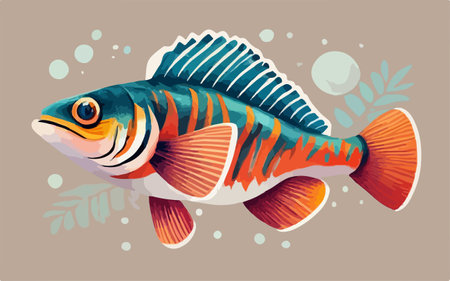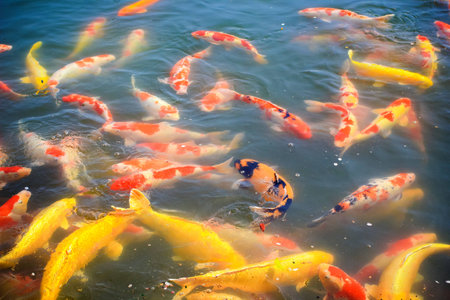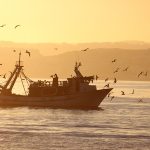1. Understanding the Dog Days of Summer
When summer hits its peak—typically from mid-July through mid-August—anglers across the U.S. enter whats known as the “Dog Days of Summer.” This term doesnt just mean its hot outside; it signals one of the toughest times of year to get fish to bite. The name comes from the ancient belief that Sirius, the Dog Star, added extra heat to the sun during this time. For fishermen, it means more than just sweating through your shirt—it means sluggish fish and challenging conditions.
During these dog days, water temperatures rise significantly, often reaching into the 80s or even low 90s in many lakes and rivers. As surface temps go up, oxygen levels drop—especially in deeper water where many fish like to hang out when it’s hot. This low oxygen environment causes fish to slow down their metabolism, making them less active and a lot harder to catch.
Here’s a quick look at how high temps affect common freshwater species:
| Fish Species | Effect of High Temps | Preferred Temp Range (°F) |
|---|---|---|
| Largemouth Bass | Becomes sluggish, retreats to shaded or deeper areas | 65–85 |
| Trout | Highly stressed; often seek cold springs or deeper holes | 50–60 |
| Crappie | Drops deeper in search of cooler water | 60–75 |
| Catfish | Tolerates heat well but feeds mostly at night | 70–85 |
| Panfish (Bluegill) | Active early and late in the day, sluggish midday | 65–80 |
The key challenge for anglers during this time is adjusting both strategy and expectations. Fish arent as aggressive, so your usual fast-moving lures or shallow tactics may not work. Instead, success comes from understanding how fish behave in hot weather and adapting your approach accordingly. That might mean fishing earlier in the morning, going deeper with your bait, or targeting species that are more tolerant of warmer water.
If youre feeling frustrated by slow bites and scorching heat, dont worry—you’re not alone. The Dog Days test every anglers patience and skill, but with the right know-how, you can still have productive days on the water.
2. Targeting the Right Species
The dog days of summer—those sweltering weeks from late July through August—can make fishing feel like a grind. But just because its hot doesnt mean the bite shuts off completely. The key is knowing which fish stay active during this time and understanding how their behavior changes when water temperatures rise. Focusing on the right species can turn a slow day into a successful one.
Which Fish Stay Active in the Heat?
Not all freshwater species handle extreme heat the same way. Some become sluggish, while others adapt and even thrive. Heres a quick look at common warm-weather targets:
| Species | Behavior in Hot Weather | Best Times to Fish | Go-To Baits |
|---|---|---|---|
| Largemouth Bass | Seek shade or deeper water; feed early morning and late evening | Dawn & Dusk | Topwater lures, soft plastics, jigs |
| Catfish | Remain active; often feed at night or in murky areas | Dusk to Midnight | Cut bait, stink bait, chicken liver |
| Panfish (Bluegill, Crappie) | Suspend near structure or shaded areas; still feed throughout the day | Mornings & Afternoons (with cover) | Maggots, worms, small jigs |
Largemouth Bass: Beat the Heat with Timing and Tactics
Bass tend to get tight-lipped during midday heat. Look for them around docks, weed lines, or submerged timber where there’s shade and oxygen-rich water. Early mornings and evenings are prime times for topwater action. As the sun climbs, switch to slower presentations like Texas-rigged worms or drop shots in deeper pockets.
Catfish: Night Owls of Summer Fishing
If youre looking for steady action when the sun goes down, catfish are your best bet. They rely heavily on scent to find food, making baits like cut shad or commercial stink baits highly effective. Try fishing from shorelines near deep holes or under bridges where cooler water collects.
Panfish: Consistent Biters with Light Tackle Fun
Panfish like bluegill and crappie don’t mind warm weather as long as they have access to structure. Look for brush piles, lily pads, or dock pilings. Use light tackle and live bait to entice bites throughout most of the day—even during high noon if theyre in the shade.
A Quick Tip:
If you’re fishing a new body of water, use electronics to locate depth changes and underwater cover—these are hot spots during summer heatwaves.
The Bottom Line on Species Selection:
The trick to summer fishing success is targeting species that stay hungry despite the heat—and adjusting your strategy to match their patterns. With bass, catfish, and panfish on your radar, you’ll have plenty of opportunities to hook into something good during even the hottest days.

3. Timing is Everything
When it comes to fishing during the dog days of summer, knowing when to be on the water can make all the difference. The heat can shut down fish activity during peak daylight hours, but that doesn’t mean you’re out of luck. Instead, smart anglers adjust their schedules to target the best windows of opportunity—early mornings, late evenings, and even nighttime.
Why Timing Matters
During mid-summer, high temperatures and intense sunlight push fish into deeper, cooler waters where they become less active. But when the sun is low or gone altogether, fish move up and feed more aggressively. This behavior gives you a better shot at getting bites if you hit the water at just the right times.
Best Times to Fish During Summer
| Time of Day | Why It Works | Tips |
|---|---|---|
| Early Morning (Sunrise – 9 AM) | Cooler temps and low light make fish more active near the surface. | Topwater lures are great; focus on shaded banks and shallow cover. |
| Late Evening (6 PM – Sunset) | The sun starts to dip, water cools slightly, and baitfish become more active. | Try slow-moving baits like soft plastics; fish may be cruising shallows. |
| Night Fishing (After Sunset – Midnight) | No sun means cooler water and less boat traffic; some species feed heavily at night. | Use dark-colored lures for contrast; consider using noisy baits for visibility. |
Watch for Weather Patterns
A cloudy day or a passing summer storm can extend your fishing window too. Overcast skies reduce light penetration in the water, keeping fish active longer into the day. If youre flexible, plan your trips around these conditions for a better chance at success.
Pro Tip:
If youre hitting a new lake or river, talk to local anglers or visit nearby tackle shops—they often know the best bite windows specific to that body of water during hot months.
By avoiding the midday sun and focusing your efforts when fish are most likely to feed, you can beat the heat and still reel in some serious catches this summer.
4. Hot Weather Tactics and Techniques
When the summer sun is blazing and water temperatures soar, fish tend to get sluggish and less aggressive. But don’t hang up your rod just yet—there are proven tactics that can help you trigger bites even during the hottest part of the season. Here’s how you can adapt your fishing approach to match the mood of summertime fish.
Slow It Down
During the dog days of summer, fish often conserve energy by sticking close to structure or deeper, cooler water. Fast-moving lures might pass them by without a second look. That’s why slowing down your retrieve can make a big difference. Let your bait linger longer in the strike zone to give fish more time to react.
Downsize Your Baits
Big baits may be appealing in spring or fall, but in extreme heat, smaller presentations tend to be more effective. Downsizing mimics smaller prey, which seems less threatening and easier for lazy fish to chase down. Try switching from a full-sized worm to a finesse worm, or from a large crankbait to a small swimbait.
Use Finesse Rigs
Finesse rigs are a go-to option when fish get picky. These setups offer subtle presentations that can coax even the most lethargic bass into biting. Popular finesse rigs include:
| Finesse Rig | Best Use |
|---|---|
| Ned Rig | Great for high-pressure lakes with clear water |
| Drop Shot | Ideal for targeting suspended fish in deeper water |
| Wacky Rig | Effective around docks, weeds, and shallow cover |
Pro Tip:
Use light line (6-8 lb test) and natural colors like green pumpkin or watermelon red flake for your soft plastics. These details can make all the difference when fish are spooked or inactive.
Weather-Wise Fishing Strategy
The key is matching your technique to the conditions. When it’s hot, remember: slow down, scale down, and go subtle. Fish aren’t chasing—they’re waiting for an easy meal. Give them one.
5. Finding Cooler, Oxygen-Rich Waters
When the summer sun is blazing and water temperatures rise, fish naturally seek out cooler, more comfortable areas with higher oxygen levels. Understanding where these spots are and how to fish them can make all the difference during the dog days of summer.
Key Locations Where Fish Seek Relief
During hot weather, fish tend to move away from shallow, warm waters and head to locations that offer some relief from the heat. Here are some prime spots to target:
| Location | Why It Works |
|---|---|
| Deep Holes | Deeper water stays cooler and holds more oxygen, especially in lakes and rivers. |
| Shaded Areas | Overhanging trees, docks, or rock ledges provide shade and help lower water temperature. |
| Spring-Fed Inflows | Natural springs or creek inflows bring in cooler, oxygen-rich water that attracts fish. |
| Main Channel Drop-offs | The current helps oxygenate the water and keeps it a few degrees cooler than stagnant areas. |
How to Approach These Spots Effectively
Deep Holes
Use your electronics or a depth finder to locate deeper pockets of water. Try vertical jigging or drop-shot rigs to get your bait down quickly. Fish here are usually less active, so slower presentations often work best.
Shaded Areas
Casting parallel to shady banks or under overhangs can yield great results. Use topwater lures early in the morning or soft plastics during midday when fish are tucked into cover.
Inflows and Springs
Look for visible current or temperature differences near where streams enter a lake or pond. Position yourself downstream and cast upstream so your lure drifts naturally into the cooler zone—this mimics natural prey behavior.
Main Channel Drop-offs
Trolling crankbaits along drop-offs or using Carolina rigs can be very effective. Keep an eye on your depth and adjust your presentation based on where you’re marking fish on your sonar.
Fishing during extreme summer heat doesn’t have to be frustrating. By targeting these cooler, oxygen-rich spots, you’ll increase your chances of getting bites even when conditions seem tough.
6. Staying Safe and Comfortable While Fishing
Fishing during the dog days of summer can be rewarding, but the intense heat and sun exposure can also be tough on your body. To make the most of your time on the water and avoid health risks, it’s important to stay safe and comfortable. Here are some simple tips to help you keep cool, hydrated, and protected while reeling in those summertime bites.
Hydration Is Key
Staying properly hydrated is one of the most important things you can do when fishing in hot weather. Dehydration not only saps your energy but can also lead to dizziness, cramps, or worse—heat exhaustion or heat stroke.
How Much Water Should You Drink?
| Activity Level | Recommended Water Intake |
|---|---|
| Light Activity (sitting in boat) | 1/2 gallon per day |
| Moderate Activity (casting, moving around) | 3/4 gallon per day |
| High Activity (bank fishing, hiking to spots) | 1 gallon or more per day |
Protect Yourself from the Sun
The summer sun can be brutal, especially when its reflecting off the water. Make sure youre covered up with UV-protective clothing, a wide-brimmed hat, and polarized sunglasses. And don’t forget sunscreen!
Sunscreen Tips for Anglers:
- Use SPF 30 or higher and apply it 30 minutes before heading out.
- Reapply every two hours—or more often if you’re sweating heavily.
- Choose a waterproof formula so it doesn’t run into your eyes or rub off easily.
Know the Signs of Heat Exhaustion
Recognizing early signs of heat-related illness could save your trip—or even your life. If you or someone else starts feeling off, don’t ignore it.
Watch for These Symptoms:
- Heavy sweating followed by chills or clammy skin
- Dizziness or lightheadedness
- Nausea or vomiting
- Confusion or irritability
- Rapid pulse or breathing
If you notice any of these symptoms, get to shade immediately, sip cool water slowly, and use wet towels to bring down body temperature. Don’t try to push through it—your health comes first.
Create a Comfort Kit for Summer Fishing
A small kit packed with essentials can make your trip a lot more enjoyable. Here’s what to include:
| Item | Purpose |
|---|---|
| Reusable water bottles or hydration packs | Keep fluids handy all day long |
| Sunscreen & lip balm with SPF | Protect skin and lips from UV damage |
| Cooling towel or neck gaiter | Helps regulate body temperature |
| First aid kit with electrolyte packets | Treat minor injuries and dehydration symptoms quickly |
| Mosquito repellent wipes/spray | Avoid bites that can ruin your focus and comfort |
A little preparation goes a long way when youre out chasing fish under the blazing sun. With these safety tips in mind, youll be better equipped to enjoy productive summer fishing trips without putting yourself at risk.


